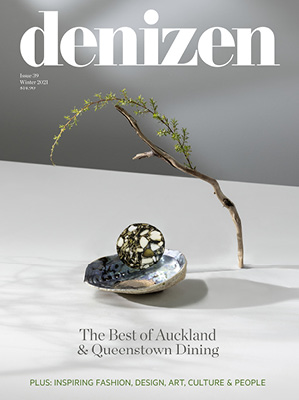Such is the pull of the world’s greatest creatives, that a special exhibition taking place in London is enough for us to buy a round-trip plane ticket. Take Tunisian born fashion legend Azzedine Alaïa for example. His new exhibition at the English capital’s Design Museum has been plastered across websites and Instagram accounts around the world like some sort of universal invitation for all and sundry to attend. There’s no denying that as our lives become increasingly littered with screens and technology, the time we dedicate to understanding the arts — all things tactile, existential and esoteric — grows too. But when the reality of heading to Europe for just one of many quality exhibitions is limited to one trip per year (if we’re lucky), a new style of art documentary in the form of Exhibition on Screen: David Hockney at the Royal Academy of Arts has stepped in to save us the airfare.
In cinemas today, the showcase is set to take viewers on a journey to devour some of the British legend’s colourful art in high definition from the comfort of a cinema. At 80 years old, Hockney has arguably never been more prolific nor uninhibited with his practice. Alongside his ever-expanding oeuvre, considered collaborations and the recent release of a Taschen coffee table book have found him a steadfast place in today’s popular culture. The art documentary covers off two of his blockbuster exhibitions at the revered London institution, one in 2012 and the other in 2016, by way of viewing almost every single artwork in situ.
So what benefit is there to going to see what is literally an ‘exhibition on screen’, you ask? Shot after hours, away from the hoards of people who are known to attend this calibre of art display, there is much more than simply viewing pleasure to be gained. When talking to the creator, award-winning documentary maker Phil Grabsky, one of the first things he explains is that “What we can offer is context, essentially. I’m trying to give you the reasons [Hockney] did what he did, what he was trying to achieve.” Having created a series of art films including the incredible Van Gogh: A New Way of Seeing, Grabsky explains the emphasis he places on storytelling as well as having the ability to somewhat control the way the art is absorbed:
“I’m showing [the art] to you in perfect conditions, albeit not real. And actually, I’m giving you the opportunity to look.” Working slowly and surely with pans, tilts and sweeping frames, Grabsky goes on to say, “I’m almost forcing you to look. Unlike watching something at home, or on your phone or laptop, in the cinema, unless you’ve fallen asleep, you are looking at the screen which means that I am essentially deciding what you are going to look at. So I’ll hold the picture slightly longer, I’ll come back to that picture. And because we’re inquisitive, the next time you look at it, you’ll begin to see things you didn’t see the first time.”
But to get a personal account from the artist himself is to really understand what it’s all about. Having been granted exclusive access to Hockney, an artist who Grabsky describes as being very careful with his energy, the viewers are privy to an anecdotal account of how the work came to be. When art-speak so often goes over our heads, the English draftsman cum painter articulately explains his practice — alongside various critics — reminding us why he is considered one of the most influential British artists of the 20th century.
Exhibition on Screen: David Hockney at the Royal Academy of Arts is in cinemas on 24th May 2018.











